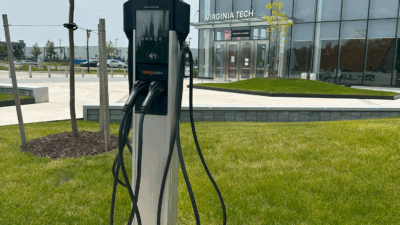Without time synchronization, vast streams of data have limited use.

The creation, communication, storage, and analysis of ever-greater streams of data—from the grid, from customers, from wholesale markets—will be a hallmark of smarter grids in the future.
Time synchronization of that data allows analysts to draw meaningful connections between events and aids both forensic analysis of past events and near-real time situational awareness. Without time synchronization, those vast streams of data have limited use. The fuller term is “reference time synchronization.”
To date, reference time synchronization has relied largely on radio clocks or satellite receivers employing a standard called IRIG-B, or Inter-Range Instrumentation Group-B. IRIG-B is an old protocol developed by the U.S. Dept. of Defense for checking time sequences in the firing of ordinance.
The power industry now recognizes it needs a greater degree of accuracy for reference time synchronization, one that can be distributed over an Ethernet network.
Two standards are important here. One is IEEE Standard 1588, which is a precision time protocol that has rapidly become an international standard used by many different industries. The other relevant standard, which has recently been completed, is IEEE Standard C37.238. The latter defines the precision time protocol of IEEE Standard 1588 in power system protection, control, and automation. IEEE Standard C37.238 addresses the specific needs of electric utilities.
Engineers should look to the newer, more accurate approach to reference time synchronization for their clients. The utility itself might well be the source for time synchronization, which would produce a very accurate correlation between utility and industrial facility. This will be important for large industrial facilities that take power at transmission voltage levels and have their own substations and circuit breakers, because this level of accuracy allows the utility to determine an exact sequence of events if and when there’s a loss of transmission voltage to the industrial customer. Those customers could be major manufacturing facilities or petrochemical facilities, but also utility-scale wind farms and solar photovoltaic farms feeding power onto the transmission network.
This approach enables the forensic determination of a sequence of past events: what actually tripped, what was the initiating event? The other is that the most precise reference time synchronization is needed for synchrophasors that increasingly will be used to provide situational awareness of the grid’s health. Synchrophasors require this higher degree of accuracy.
One outcome of real-time situational awareness is remedial action schemes, which could inform rapid, automated responses that prevent the collapse of the grid. A cascading fault actually occurs over many seconds, even minutes. With proper situational awareness, an automated response or even an operator’s timely intervention could stop a fault from cascading across the system.
Let’s tie this back to the industrial customer. The greater that customer’s load or generation capacity—whether that’s a petrochemical facility, a steel mill, or a 180-MW wind farm—the greater the potential impact on the grid. Thus the utility has great interest in seeing that industrial customer on the highest standard for reference time synchronization, which is IEEE Standard 1588 and its corollary, C37.238. These standards are now published and the vendor community is offering products which adhere to these standards, contributing to the cost-effectiveness of adopting them.
It’s true that the consulting specifying engineer may find, in designing a new system or in retrofitting a legacy system for time synchronization, that adopting IEEE Standard 1588 and C37.238 is more costly upfront and, at first, it may restrict the choice of related products. However, it’s clear that these two standards will prevail for reference time synchronization going forward, covering the lifecycle of a design for a new or retrofitted system.
Sam Sciacca is an active senior member in the IEEE and the International Electrotechnical Commission (IEC) in the area of utility automation. He has more than 25 years of experience in the domestic and international electrical utility industries. Sciacca serves as the chair of two IEEE working groups that focus on cyber security for electric utilities: the Substations Working Group C1 (P1686) and the Power System Relay Committee Working Group H13 (PC37.240). Sciacca also is president of SCS Consulting.



